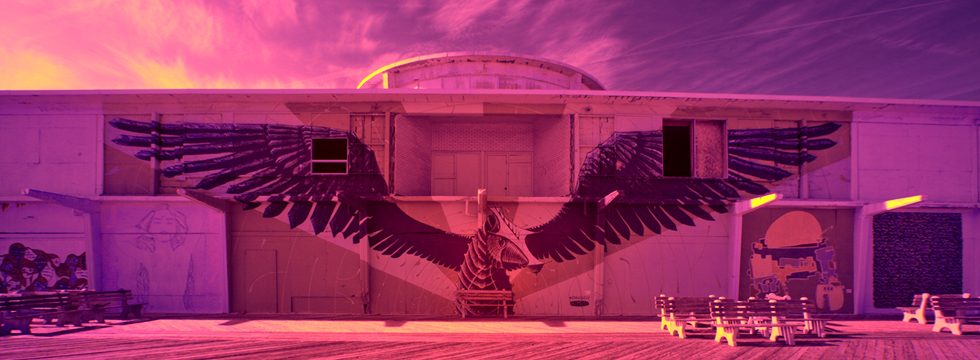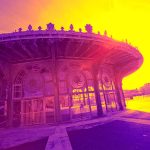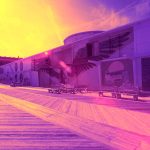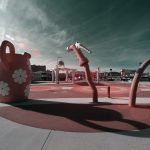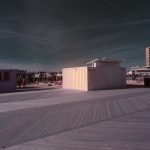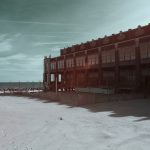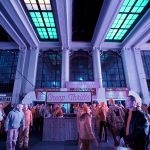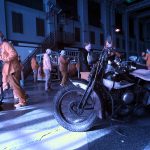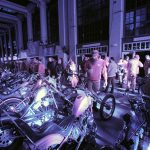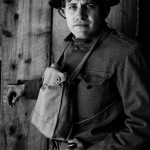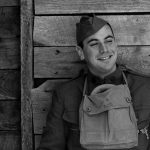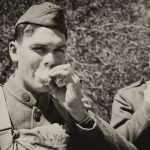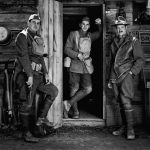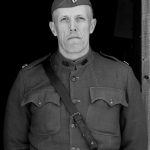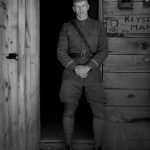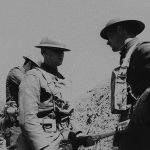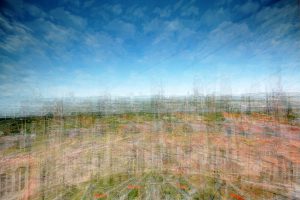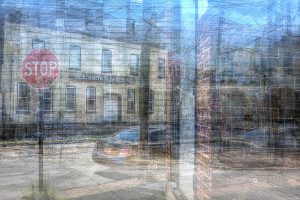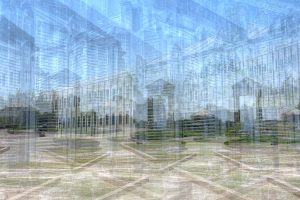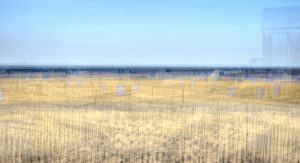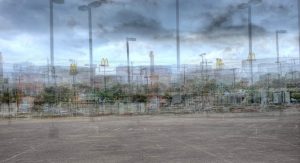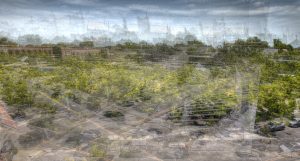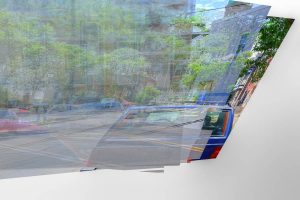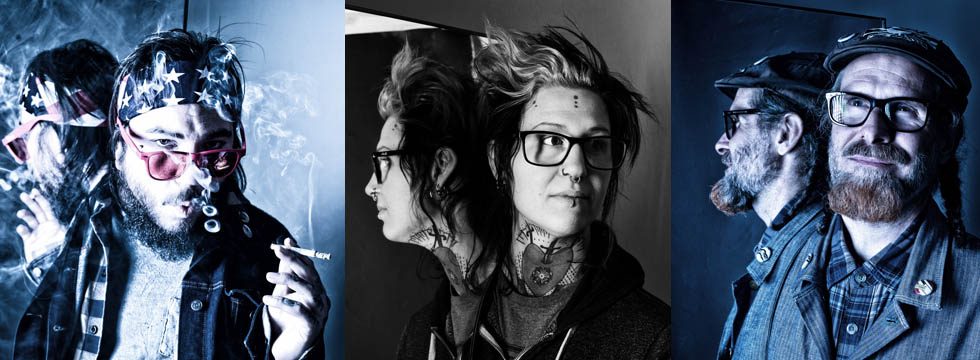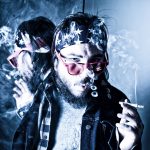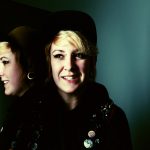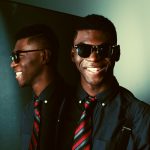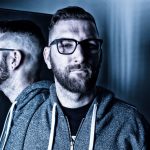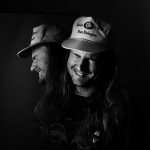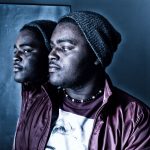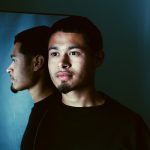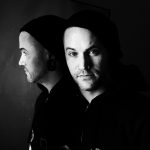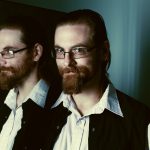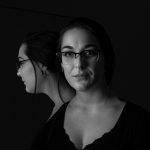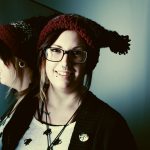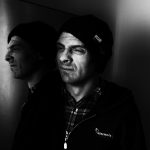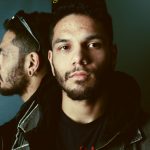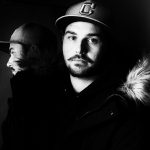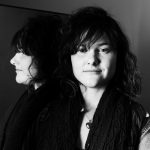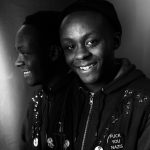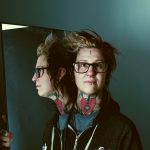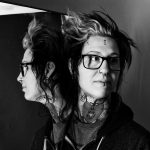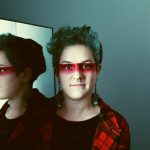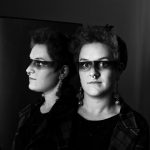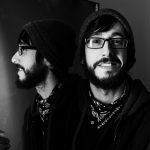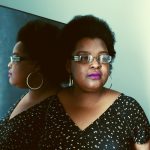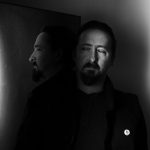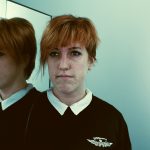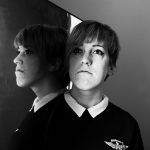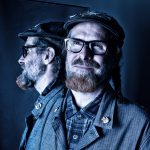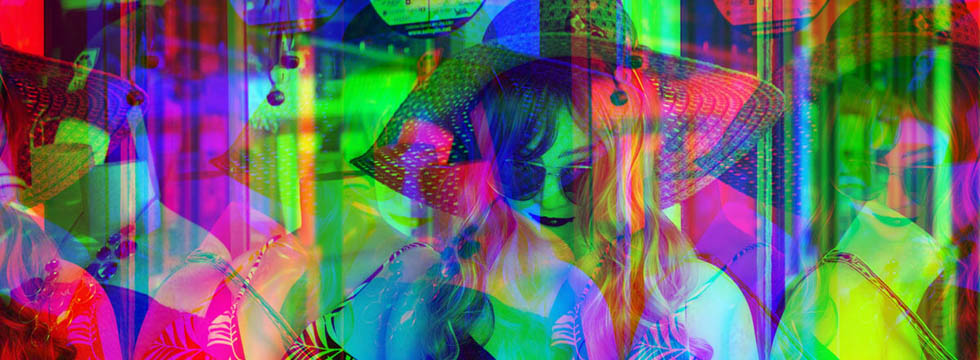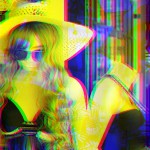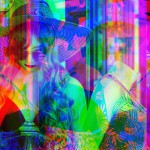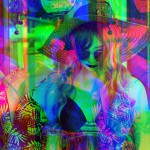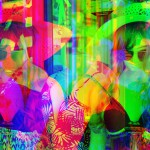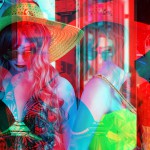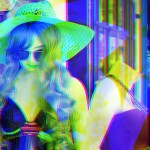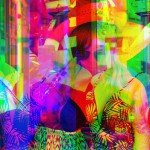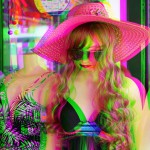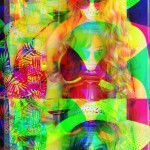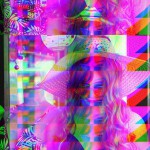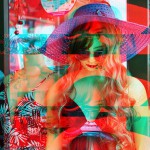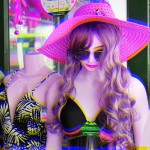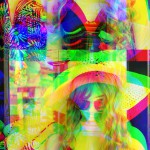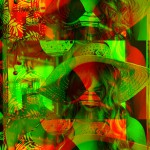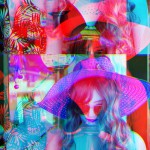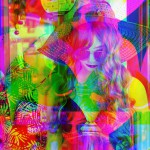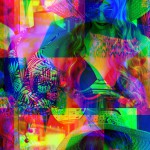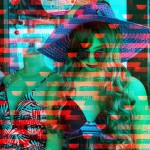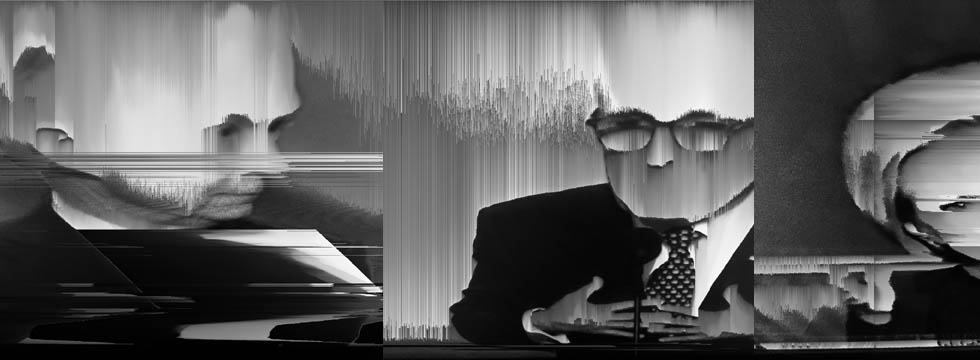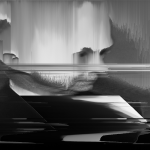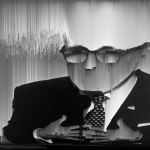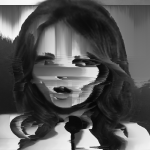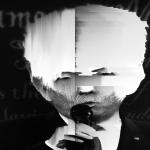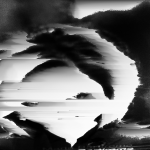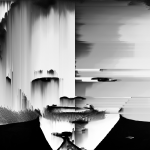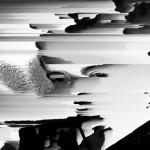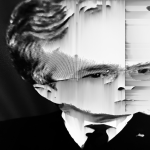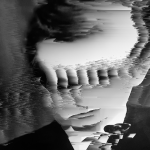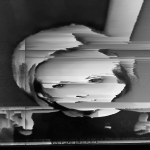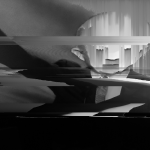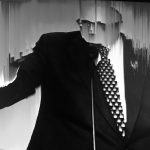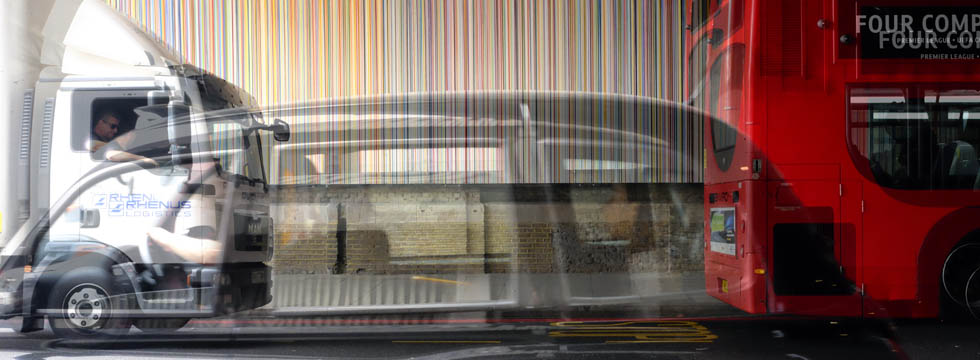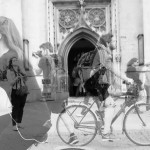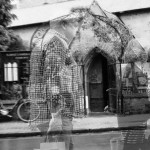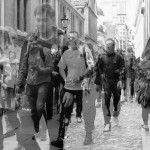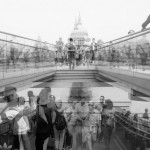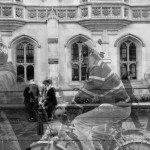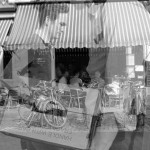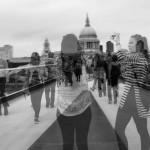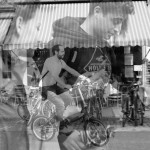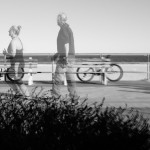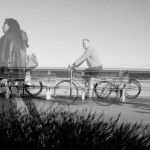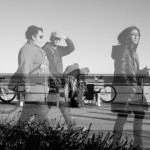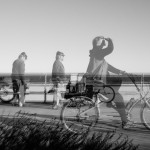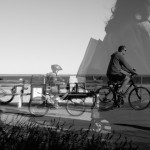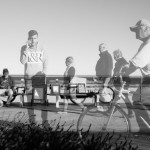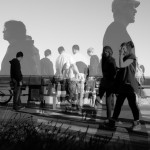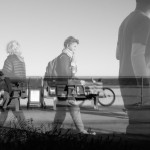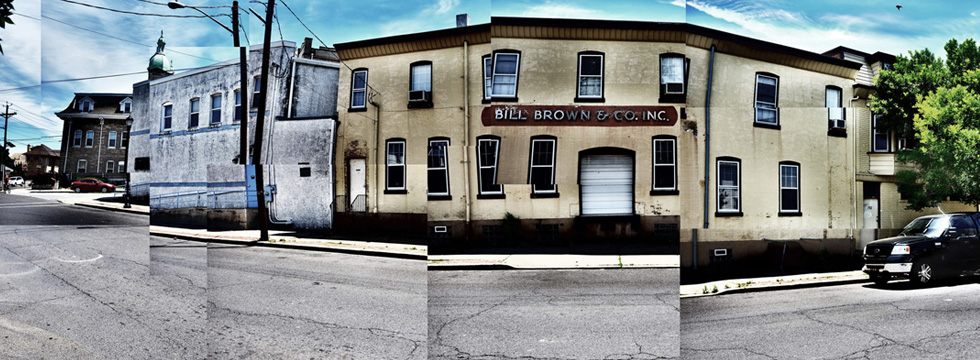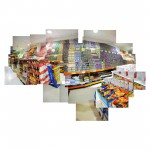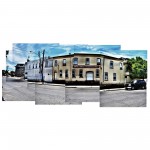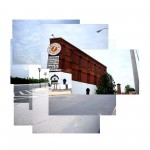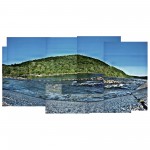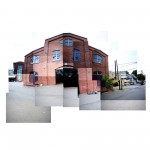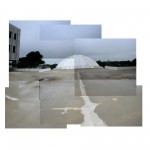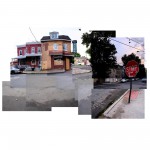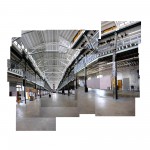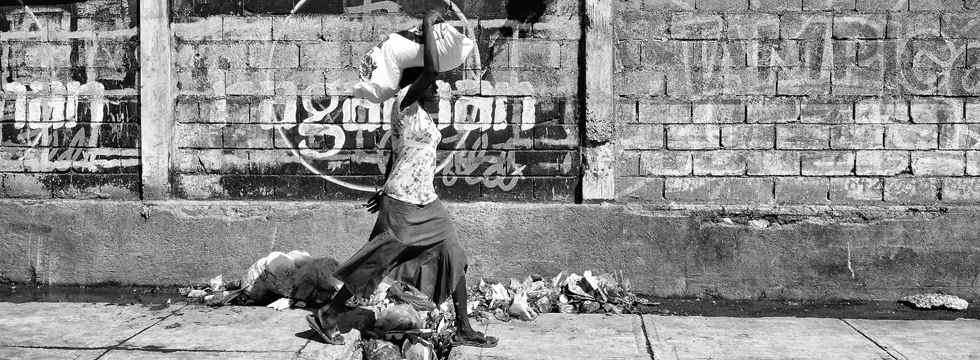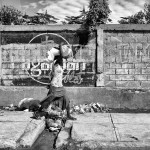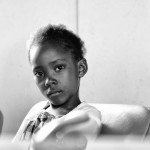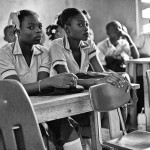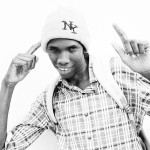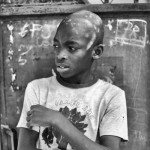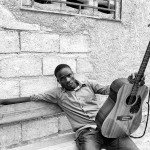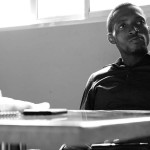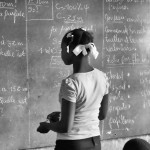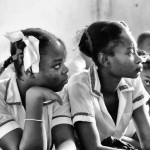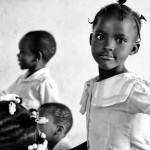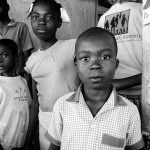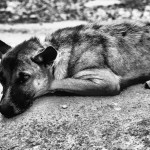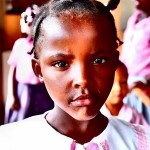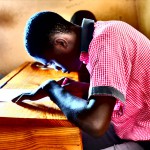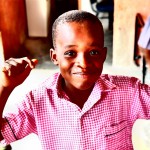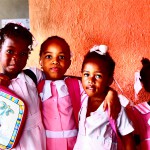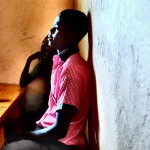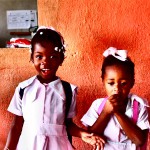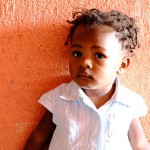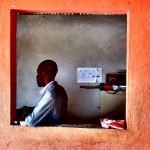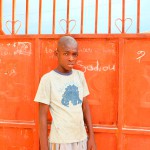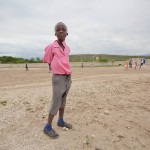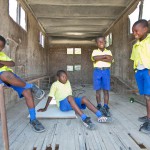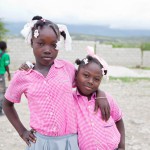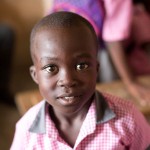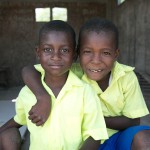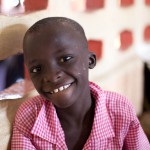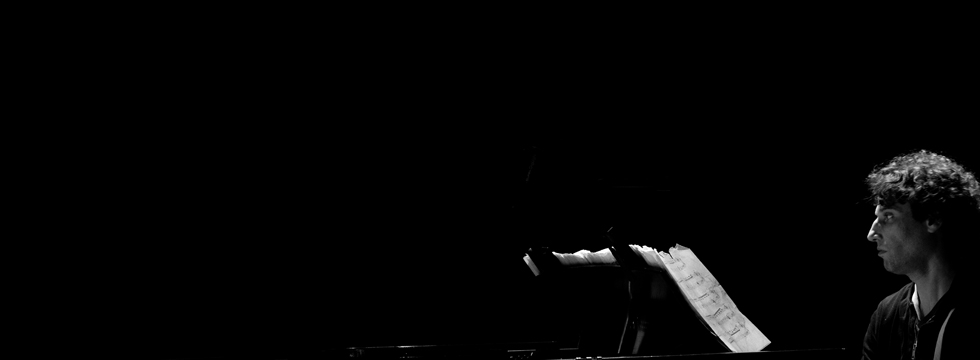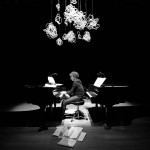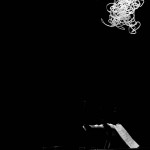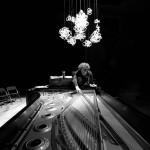14
Park Life. Asbury Park, NJ that is. I love the beach, and it’s not just a summer love either, I visit in the winter as well. When I am down there, I travel light with my old Fuji X-T10 mirrorless camera and only a 27mm lens. The images from my most recent visit were from an old Canon 5D Mark II that I had converted to Super IR (infrared).
The three rows of images are processing experiments. Although I am very new to this and have been doing it wrong (compared to what infrared film should look like), I really like these digital processing mistakes. I have a lot to learn, and what better place to learn than at the beach.
22
There are clubs, and there are CLUBS. The GWA (Great War Association) has a battlefield in Central Pennsylvania where educational events are held to honor those who fought. Everything there is as authentic as you could imagine – down to the smallest detail. Bunkers, trenches, uniforms and most importantly, the people. The participants take great care and pride with the reenactments – and it is a great living history lesson!
These fews photographs were staged after a video shoot at the battlefield. I treated the images in different ways (digitally) as I would imagine inconsistencies with film and process photography at that time period.
Special thanks to the 28th Division, 109th Infantry.
14
For the longest time I have wanted to create a series of portraits inspired by the book ‘LEAST WANTED‘ by Steidl Kaseher. A few pages into the book are two points:
01. a mugshot does not mean that the person is guilty or innocent of any crime.
02. the fact that a mugshot was taken does not establish that a crime was committed or that the subject of the photograph is guilty or innocent of any wrongdoing.
The book is a thick, thick book of mug shots curated from a collection of thousands of photographs dating from the early 1870’s to the ’70s. Four pages in the book have the subject holding a mirror over their shoulder with a scoop cut out of the lower right corner. This unconventional shape allows the subject to hold the mirror close to their body, and allows for the photographer to see both front view and side profile of the subject in one shot. Is this why this was done? To only use one frame of film per customer? If so, I find that to be ingenious. Ever since seeing these few pages of ‘double-headers’ I had to make my own set.
I have to admit, this first go around I did some very backwards things technically + had two battery fails (yes, two – camera and triggers). Nightmare.
I set up a white-black v-flat at a 90 degree angle, the white canvas was the backdrop, and black was camera right. Camera left was a 750 watt strobe at 50% with a grid. The mirror held in the subject’s right hand acted as a flag to cut the strobe. All of this backwardness made for terrible lighting – it was an experiment to use light and cut light to create unflattering everything. And, I had left the camera on a custom color temperature from a shoot the day before, which caused the inaccurate blue tones. After that, yes, there’s more – I ran a bleach filter to subtract any saturation and kicked up tonal contrast. What a mess.
I did tell the subjects’ what this project was all about and did not encourage or speak too much – leaving them to their thoughts and expressions – mostly. Very few needed prompting. I think what is interesting is the combined front view and side profile. We never see ourselves in a portrait this way.
As a part-time contrarian (with my own editing), I changed my mind half way through, and decided to throw consistency out the window. The end result – two edits. Edit one is the cool blue set, and edit two is a mix of production that best suited the individual. I think I got it right in the end.
I have to keep thinking about this, why I really wanted to make this series. I’ll continue to work this series as there were many friends that should be in it. Check back some day, I might have more answers.
07
At it again with the Processing software. This set is channel shifting. Not sure if there is really any practical application for it, but I love the effect and what happens. This series is randomized – once the image file is written into the code and you click process – something different happens every time. Much like CMYK where each plate is separated in commercial offset printing (I can’t believe I used to have to approve ‘separations’ – and be able to read density in color) – in RGB, these three channels are ones that are offset to create the overlay effect. One of the other random effects is the co-ordinates – either left to right or top to bottom, much like an old TV needing to be tuned to lock the signal.
22
What happened was…
I’m a huge fan of the artist Richard Prince, which I may have made mention of only a thousand times. I’m fascinated by his work – I love it, and the aspect of appropriation which he returned to a few years ago. His work made the news, and the art news. If you are unfamiliar with the story / lawsuit, here’s a link to a short version. I think much of me likes the discussion about authorship, ownership, intellectual property, etc. So, if I photograph something off of the T.V. screen it is mine right? What if two people take the same shot at the same time? Is that even possible? I suppose this thought could be similar with a camera and not a phone, but I don’t think it’s possible anyway.
During the U.S. National election debates I watched and listened to as many as I could. And, during parts where I got a bit bored or lost, I’d photograph the screen with my i-phone. I’d hold it up close at an angle to intentionally distort the image. I found myself doing this over and over, and it was easy as the speakers were on camera for good amount of time to keep getting shots. If I messed it up, I knew the camera would return and I’d get another shot. I kept collecting this library of distorted politicians.
And, that was that. I posted a few on Facebook (citing Richard Prince) and the element of appropriation. Again someone asked me what app I used. The images were funny, mostly reminding me of the video ‘Here Comes Your Man’ by the Pixies. If you have a wide angle lens, turn it to its widest, get close to a person and photograph them they will look distorted – big head – small feet. Never use a wide angle lens for portraits. I never thought that I’d use this set of T.V. images for anything until…
I got into Pixel Sorting – or – Pixel Shifting. This is something I’ve wanted to explore for years. I was going to commission a programmer to glitch photos the way I wanted to tear them apart and destroy them, but then I found the code. Turns out, it’s the same code the students use in the Maker Space at the school where I teach part time. Who knew? Just download this little bit of software called Processing and you’re golden.
This is about 350 lines of code that will move the pixels in an existing image and re-save it. There are many variables to think through and experiment with (x and y, most obviously), as well as the dimensions of the starting image. Some of the images I parted at the center, others I prefer the vertical drag. In truth, I’d keep swapping numbers or reloading code until I got an image to react a certain way.
What I love about this and what’s exciting to me is the two part process. The first image will likely have a moire pattern from the screen the image is captured from. This pattern then reacts with unpredictable results with the pixel shifting code. I left the images larger than I normally do so you can see the detail better at a larger size.
So unlike Richard Prince, I took these images so I own them right? Still trying to think of a clever title, Data Streaming – or – Data Screaming, something like that.
20
I never went out of my way to experiment with double exposures – until now. It happened by mistake a time or two when I would shoot 2-1/4 square film with my Holga, but when the film jammed unbeknownst to me and I saw the results – I was disappointed by this rather unhappy accident.
As my romance continues with my mirrorless Fuji, I take it everywhere. When I traveled to the UK, I went with the intent to create a series of double exposures. The camera allows you to see and then set the first image and then see the second overlaid before committing. Both images are fused in-camera, they are not separated – so, there’s no undo. Or even the idea to compose images later on in Photoshop – who has the time? I don’t know that I would.
I set up rules for myself with this project since it was my first go at a street photography mash up. The rules were to include, people and bicycles, or a bicycle at least. Secondary rules would be people and phones (on the phone, or taking a picture with a phone). Backgrounds had to be interesting – preferably an arch, doorway or something spectacular architecturally. As I was creating these double exposures, it was so exciting for me. The first time I was really enjoying street photography. And as the set was coming together I was thinking about Ghosts vs. Tourists as a title. Just a few shots in one fairly busy place reveals the most amazing passage of time.
The next set I tried, I remained in one place and carried two of the rules: people and bicycles – the background of the boardwalk and ocean was interesting enough for me.
All the people in the images I don’t know and very likely will never meet. I don’t feel it’s a violation of privacy with this intent and I don’t see people as strangers in these images – just ghosts passing through. Perhaps these ghosts see me as the stranger.
29
Does it matter who did it first? or does it matter who does better? I don’t feel originality matters if you are making art for yourself and having fun. I think that happens to bands as well. Paralleling. I’ve done that a lot and made a conscious effort not to. ‘You know who you sound like?’ – worst thing ever to say to a band. With artists if I noticed a parallel I would maybe ask if they know of that artist in the head space of great minds think alike at different times. I think people over use their reticular cortex before sussing out someone else’s feelings or asking questions about intent.
I think David Hockney’s collage photos are so simply brilliant – time capsules of beauty. I don’t know that I could write how much I truly love them all. I never really thought to have a go myself, but I was trying to get a student I was teaching to do these photo collages – it seemed like a project she’d enjoy. My colleague who taught photography before me gave me a hand out she wrote on this technique which she called neo-cubism. Love that. And, then I thought – the best way forward is to experiment and make a bunch myself. I never thought that it would become so addictive. So much to learn still about best lenses and distances to find a formula to what might be the most effective technique for the scene.
The local win here is views that we see on regular basis. To see something so familiar in a different or clever context will never go out of style. Am I the first person to photograph that building? Highly unlikely. Did I photograph that building the best? Highly unlikely. Did I photograph it for me? Highly likely.
My favorite comment so far about this series, “what app did you use to do this?”
21
Every semester class I teach I talk about Henri Cartier-Bresson, the French photographer considered the master of candid photography, and an early user of 35 mm film. More specifically, the phrase he coined ‘The Decisive Moment’ – which, I am hoping you know all about. And sorry to bore you – I think I may have written from this direction before.
Unlike The Humans of New York by Brandon Stanton, Cartier-Bresson did not need a story to support his images. Perhaps that’s what we want now, more of a story to guide the viewer’s imagination further. And perhaps that’s a smart evolution of imagery to include the editorial on the image.
Haiti is an amazing country – the people, the landscape, the culture – and every breath I took there was filled with all of that. I was flown out to document several schools in various states and stages of development. A small group I traveled with were going there to teach classes, train teachers, plan for wells to be dug at the schools. The Haitian students were so wonderful to be around. First of all, they all dress so smart, love learning and going to school – they are all so happy. And then second of all, once they got used to this tall, white, stranger they were so playful – making fun faces for the camera – constantly posing and, pulling friends into group photos – for hours.
I shot with my Mark III and this new Fuji mirror less camera I’m still testing out. The Fuji has several interesting tricks and in camera processing (hence the harshness of some of the color images). I am still divided about robbing many images of color, but there’s no turning back with the Fuji (unless you shoot in RAW) – so for the massive amount I had to shoot, I’d change modes several times from black and white to processed to natural. I took several thousand images: a series of The Teachers, a series of The Classrooms, many panoramic photographs of the landscape, and a ton of street photography. I think this is my largest broad edit I have every shot and it will take ages to organize. This set posted are my favorites for the terms of my phrase, ‘A Defining Moment’ – an image you hope effects a viewer as much as it did you when you took it.
The boys in yellow and blue were not from the school I was working with. They came from a neighboring school, and were so curious and excited to see what was going on. They posed for ages and ages in this abandoned truck. I suspect these kids are rarely the subject of many photo shoots, let alone see themselves immediately on the camera’s screen. Not much of a ‘selfie’ generation to worry about in this part of Haiti, they have many other concerns – such as doing well in their exams. The future of education in Haiti is in good hands, thanks to the three selfless and tireless teachers that asked me to document one of their continual visits to a country rebuilding itself.
Visit Haiti.
11
One of my all time favorite photography assignments this year was documenting a series of concerts at the Richardson Auditorium in Alexander Hall on the Princeton University campus. The plan was a really good one. The artist, Marsha Levin-Rojer was commissioned to make a series of sculptures that would hang above the stage over the performers – and, the audience seating was on the stage! Creating this dynamic and intimate experience of connecting the audience with the performers and the art. It worked very well. All the shows sold out. And, the art was very beautiful.
The final of the three performances was magical beyond my words could ever describe. David Greilsammer had flown in that day from Switzerland to perform ‘Scarlatti/Cage Sonatas: Journey Between Two Worlds’ – two Steinways facing each other, but one filled with screws, bolts, erasers and bits between the piano strings. The modification gave it a dulled but percussive sound – was amazing.
Photographically it’s a challenging project – very low light, long exposures, only tripod work. Lucky for me I could sit in the on the rehearsals and capture the majority of images needed before the audience was seated, and then retreat to the balcony – only able to move or shoot when there was applause. And, most frequently and in this case it was at the end only. You basically have to be a photo ninja to not disturb anything during the performance – moving step by step on old creaky floorboards. They would hear the shutter click from up there and it would ruin the quiet moments of the performance. Advised discretion.
During the rehearsal David had a few requests – lower the lights (oh no I thought) and turn up the heat a bit – which meant tuning the piano again right before the performance. Lower light I thought – oh well, he wants it dark – dark it will be. I switched over to black and white and underexposed many of my shots to make them as moody as I could. During these final stage edits everyone had left to prepare for the show. I sat nearby and watched David play the pianos forever and took the occasional shot so as not to disturb him. It was just me and him.
I travelled that journey between two worlds – twice, and I highly recommend looking up his schedule and going to a performance. Not only was the Cage part elevating – the whole experience opened my creative envelope never to be sealed again. I love what I do for moments such as these.

